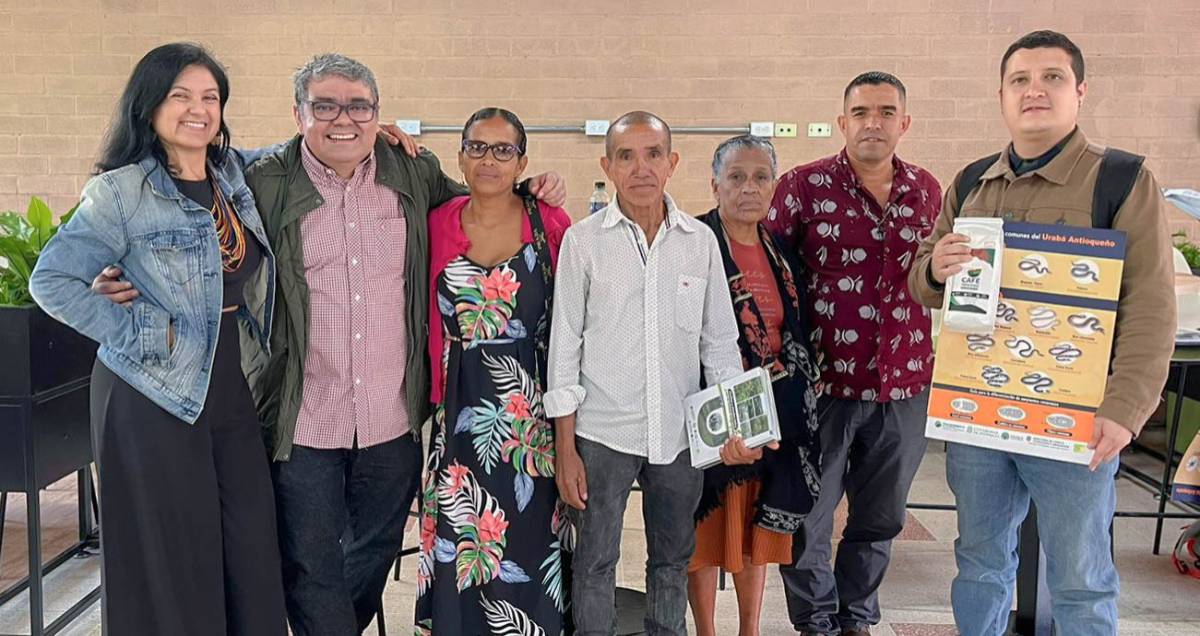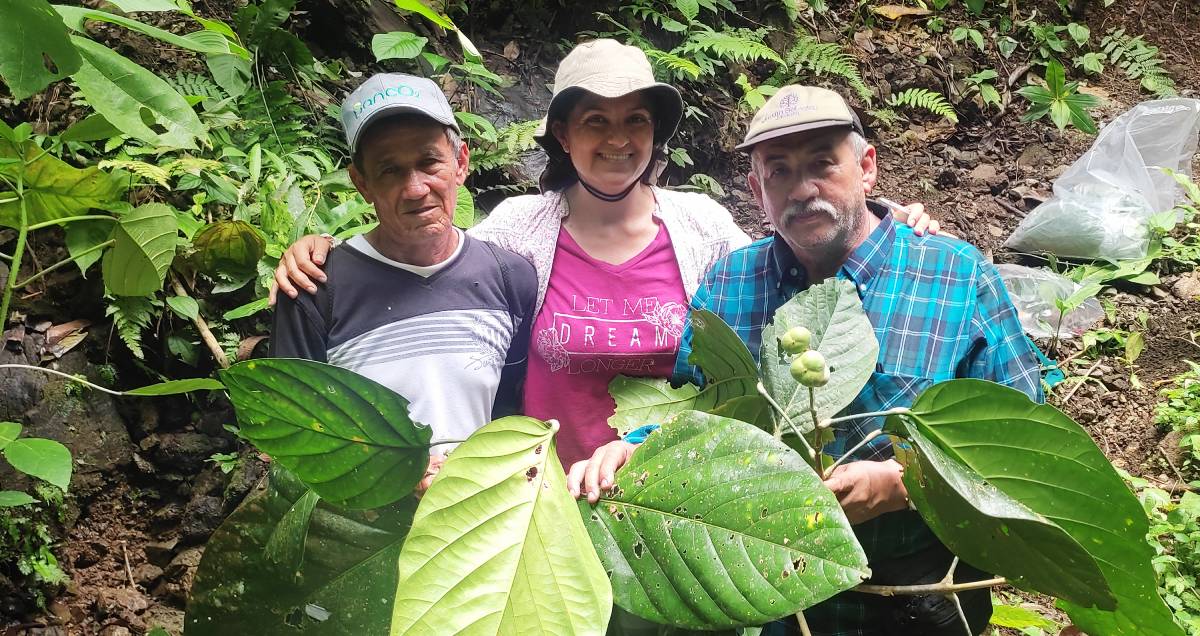· Parte de los resultados de la investigación que fue consignada en un libro contó con la participación de sabedores locales de comunidades rurales de estos municipios.
· De las 150 plantas documentadas en campo, el 80% corresponde a usos medicinales incluyendo gripas, accidentes ofídicos, cólicos menstruales y dolores de cabeza, entre otras.
· El trabajo que se hizo en equipo con la U. de A y la Universidad de Costa Rica, también contribuyó al hallazgo de una nueva especie botánica.
De acuerdo con el Instituto Nacional de Salud -INS- cada año se registran, en promedio, 4.500 accidentes ofídicos en el país. Es decir, de cada 100.000 colombianos, entre 8 a 10 tienen el riesgo de sufrir uno de estos eventos. Se estima que, de ese total, el 1 % presenta letalidad.
Con el propósito de contribuir a la búsqueda y consolidación de medicamentos antiofídicos desde la botánica, durante 24 meses, entre 2022 y 2023, el grupo de Investigación en Temas Agroambientales -INTEGRA- del TdeA lideró un estudio con comunidades rurales de los municipios de Dabeiba, Occidente del departamento y Mutatá, Urabá antioqueño, sobre saberes ancestrales etnobotánicos.
El proyecto denominado “Usos tradicionales y potenciales de la biodiversidad en el Noroccidente de Antioquia: sustancias bioactivas y su aplicación terapéutica” fue financiado por el Ministerio de Ciencia, Tecnología e Innovación y ejecutado por el TdeA, la U. de A. y la Organización de Estudios Tropicales e Instituto Clodomiro Picado de la Universidad de Costa Rica.
Resultados de la investigación fueron recopilados en el libro “Plantas y etnobotánicas en el Urabá antioqueño: Dabeiba y Mutatá”. La coordinación del texto, bajo el Sello Editorial del TdeA, cuya presentación se hizo este viernes 9 de agosto, estuvo a cargo de Marcela Serna González, profesora de la Facultad de Ingeniería del TdeA y Álvaro Cogollo Pacheco, botánico y coinvestigador del proyecto.
“Con el proyecto buscábamos contribuir al conocimiento de la flora local mediante muestreos rápidos de vegetación, identificación de especies vegetales utilizadas en la medicina tradicional por esas comunidades del territorio; caracterización de fauna venenosa de la región, incluyendo serpientes, escorpiones y arañas y evaluación en laboratorio de la eficacia de las plantas utilizadas como antiofídicas o antiveneno en esas zonas rurales”, explicó la docente Marcela Serna González, graduada como ingeniera Forestal, magister en Bosques y Conservación Ambiental y doctora en Ecología.
La investigación se adelantó con las comunidades de las veredas Caucheras, El Cinco, San José de León y Pavarandocito del municipio de Mutatá y con los habitantes de la vereda Llano Grande, en Dabeiba. En estas zonas rurales el grupo de estudio se integró con los llamados sabedores locales quienes guiaron a los investigadores, entre la flora endémica, en la selección y recolección de las plantas consideradas por ellos como sanadoras de diferentes dolencias, incluidas las mordeduras de serpientes y animales venenosos.
En una revisión preliminar sobre las plantas utilizadas para la mordedura de serpiente en Colombia, encontramos que de cerca de 300 registros de plantas documentadas, 244 corresponden a usos medicinales en gripas, accidentes ofídicos, cólicos menstruales, dolores de cabeza, purgantes y desinflamatorios, entre otros; 54 se emplean en la preparación de tratamientos capilares, perfumes, jabones y aromatizadores y 17 en aplicaciones mágicos-religiosos como contra al ‘mal de ojo’, por ejemplo”, detalló la docente y coordinadora científica del proyecto.
También en la vereda Llano Grande de Dabeiba, los investigadores abordaron a los reincorporados de las antiguas FARC establecidos en el Antiguo Espacio Territorial de Capacitación y Reincorporación -AETCR- con el propósito conocer la manera de atender los accidentes ofídicos en el monte.
Antes de la publicación del libro el grupo de estudio se desplazó a estos municipios y compartió el resultado de la investigación con las comunidades consultadas. El documento está dedicado a Luis Alberto Cuesta (q.e.p.d.), sabedor de Pavarandocito, quien con su conocimiento en etnobotánica local acompañó y contribuyó al equipo universitario en el desarrollo de esta investigación científica.
El texto “Plantas y etnobotánicas en el Urabá antioqueño: Dabeiba y Mutatá” consta de cuatro capítulos y ya está disponible para la consulta de los públicos interesados en las bibliotecas universitarias y otros centros de interés científico del país.
De las plantas mencionadas por los sabedores, se escogieron tres por sus propiedades antiofídicas: abrazamico, cordoncillo blanco y martín negrito, así como otras cinco especies elegidas por botánicos y encontradas en los muestreos de flora para evaluar su actividad biológica en laboratorio.
Así mismo, la investigación contribuyó a ampliar el inventario de botánica de la región. Durante el trabajo el equipo halló, en las selvas de Mutatá, una nueva especie, emparentada con el inchi o maní del Inca, la cual se encuentra en proceso de descripción para su publicación científica.
Se espera poder hacer el anuncio de nuevos hallazgos botánicos en las montañas de Dabeiba y Mutatá por parte de este equipo interdisciplinario encabezado por el grupo INTEGRA del TdeA.
![]()
TdeA Research Group Led Ethnobotany Study in Dabeiba and Mutatá
- Part of the results of the research that was recorded in a book had the participation of local experts from rural communities in these municipalities.
- Of the 150 plants documented in the field, 80% correspond to medicinal uses including flus, snakebite accidents, menstrual cramps and headaches, among others.
- The work that was done as a team with the Universidad de Antioquia and the Universidad de Costa Rica, also contributed to the discovery of a new botanical species.
According to the National Institute of Health (INS, in Spanish), an average of 4,500 snakebite accidents are recorded each year in the country. That is, out of every 100,000 Colombians, between 8 and 10 are at risk of suffering one of these events. It is estimated that, of this total, 1% have lethality.
With the purpose of contributing to the search and consolidation of antivenom medicines from botany, for 24 months, between 2022 and 2023, the Research Group on Agro-environmental Issues -INTEGRA- of the TdeA led a study with rural communities in the municipalities of Dabeiba, in the west of the department and Mutatá, Urabá región in Antioquia, on ancestral ethnobotanical knowledge.
The project called "Traditional and potential uses of biodiversity in the Northwest of Antioquia: bioactive substances and their therapeutic application" was funded by the Ministry of Science, Technology and Innovation and executed by the TdeA, the Univesidad de Antioquia and the Organization of Tropical Studies and the Clodomiro Picado Institute of the Universidad de Costa Rica.
The results of the research were compiled in the book "Plants and ethnobotanists in the Urabá region of Antioquia: Dabeiba and Mutatá". The coordination of the text, under the Editorial Seal of the TdeA, whose presentation was made this Friday, August 9, was in charge of Marcela Serna González, professor of the School of Engineering of the TdeA and Álvaro Cogollo Pacheco, botanist and co-researcher of the project.
"With the project we sought to contribute to the knowledge of the local flora through rapid vegetation sampling, identification of plant species used in traditional medicine by these communities of the territory; characterization of venomous fauna of the region, including snakes, scorpions and spiders and laboratory evaluation of the efficacy of plants used as antivenom or antivenom in these rural areas," explained professor Marcela Serna González, graduated as a Forestry Engineer, Master in Forests and Environmental Conservation and PhD in Ecology.
The research was carried out with the communities of the villages of Caucheras, El Cinco, San José de León and Pavarandocito in the municipality of Mutatá and with the inhabitants of the village of Llano Grande, in Dabeiba. In these rural areas, the study group was integrated with the so-called local knowers (the wise) who guided the researchers, among the endemic flora, in the selection and collection of plants considered by them to heal different ailments, including snake bites and venomous animals.
In a preliminary review of the plants used for snakebite in Colombia, we found that of about 300 documented plant records, 244 correspond to medicinal uses in flu, ophidian accidents, menstrual cramps, headaches, purgatives and anti-inflammatories, among others; 54 are used in the preparation of hair treatments, perfumes, soaps and flavorings and 17 in magical-religious applications such as against the 'evil eye,' (a supernatural belief in a curse brought about by a malevolent glare, usually inspired by envy.) for example," explained the professor and scientific coordinator of the project.
Also, in the village of Llano Grande in Dabeiba, the researchers approached the reincorporated members of the former FARC guerrilla established in the Old Territorial Space for Training and Reincorporation (AETCR, in Spanish) in order to learn how to deal with snakebite accidents in the mountains.
Before the publication of the book, the research group traveled to these municipalities and shared the result of the research with the communities consulted. The document is dedicated to Luis Alberto Cuesta (r.i.p.), a connoisseur of Pavarandocito, who with his knowledge of local ethnobotany accompanied and contributed to the university team in the development of this scientific research.
The text "Plants and Ethnobotany in the Urabá Region of Antioquia: Dabeiba and Mutatá" consists of four chapters and is now available for consultation by interested audiences in university libraries and other centers of scientific interest in the country.
Of the plants mentioned by the experts, three were chosen for their antivenom properties: abrazamico, cordoncillo blanco and martín negrito, as well as five other species chosen by botanists and found in flora samples to evaluate their biological activity in the laboratory.
Likewise, the research contributed to expand the inventory of botany in the region. During the work, the team found, in the jungles of Mutatá, a new species, related to the Inca inchi or peanut, which is in the process of being described for scientific publication.
It is expected that the announcement of new botanical findings in the Dabeiba and Mutatá mountains will be made by this interdisciplinary team led by the INTEGRA group of the TdeA.








